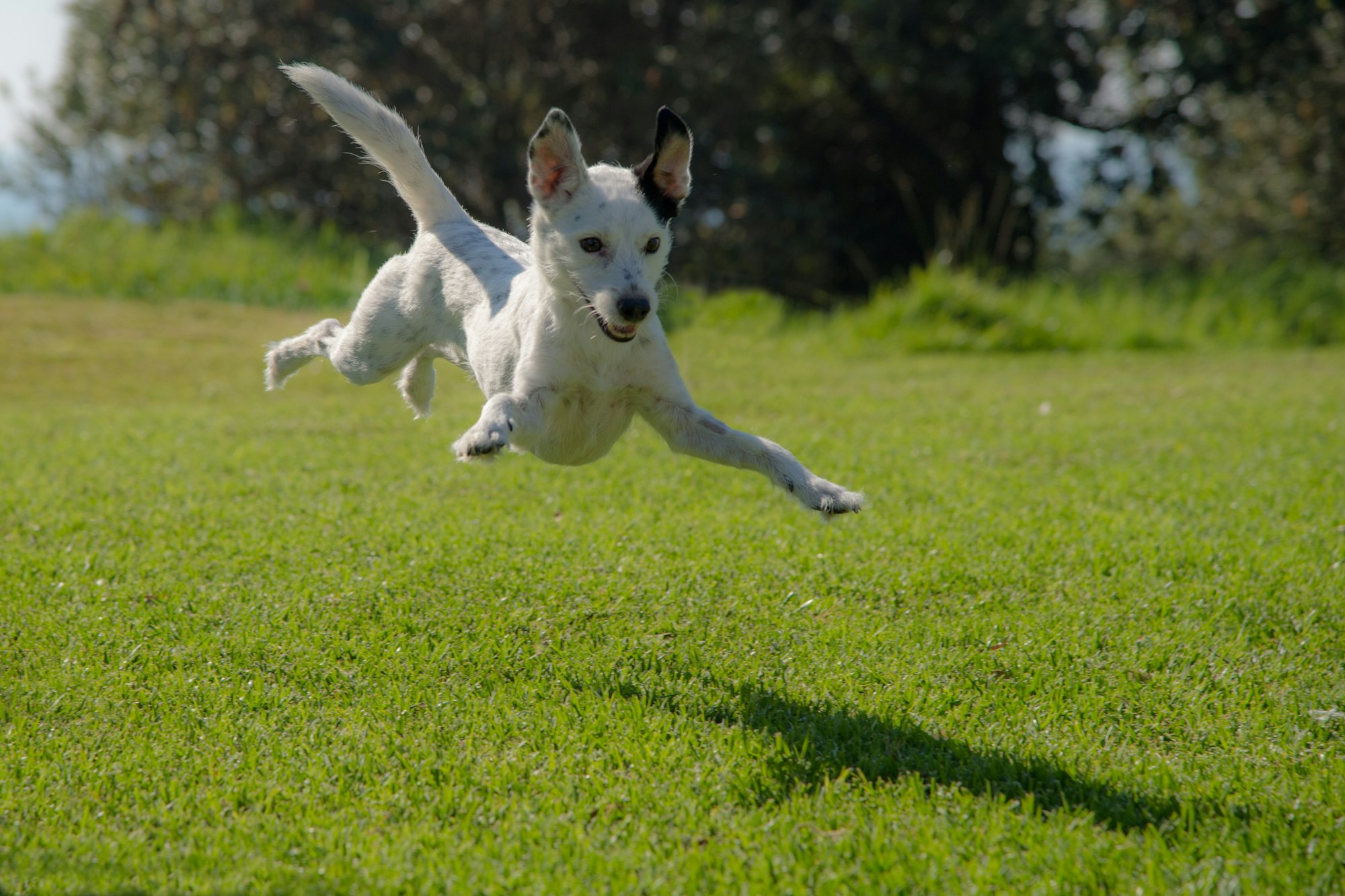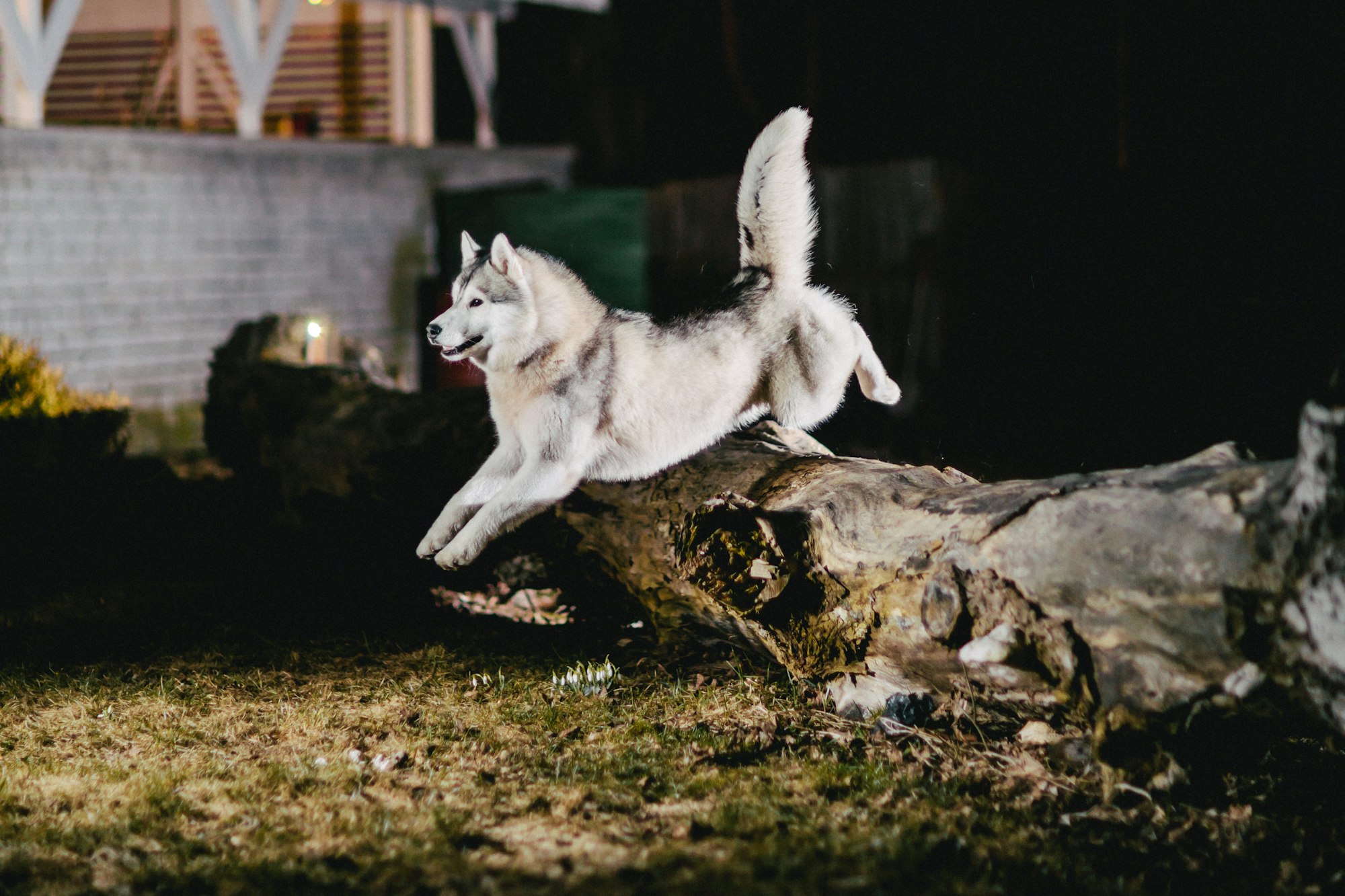Everyone loves a warm and enthusiastic greeting from their furry friend, but when your Golden Retriever thinks they're the same size as a Chihuahua, things can get a bit chaotic. It's a common scene: You arrive home after a long day, and before you can set down your bags, you’re greeted by your overly-excited dog leaping towards you. While the intention is pure love, there's a proper etiquette every pet owner should establish. Let's dive into the ultimate guide on how to stop a dog from jumping up.
Why Dogs Jump Up
First, it's crucial to understand why our canine friends engage in this behavior. Primarily, it’s an attention-seeking tactic. As puppies, dogs quickly learn that jumping can get them noticed. When they're tiny and oh-so-cute, we don’t mind the jumping. In fact, some breeds like the playful basset hound beagle mix are natural jumpers. But as they grow, the behavior can become problematic.
Another reason dogs jump is to greet us face to face. In the dog world, it's a friendly gesture, akin to us giving a warm hug. So, when your dog jumps, he might just be saying, “Hello! I missed you!”
Steps to Prevent the Jumping
Set Clear Boundaries
From the day you bring your dog home, it's essential to establish and maintain consistent boundaries. Suppose your medium-sized dog used to jump on you as a puppy. In that case, they'll likely continue unless you reinforce that it's no longer acceptable. It's a lot easier to instill good habits from the start than to reverse bad ones later on.
Turn Your Back
One effective technique is to simply turn your back when your dog starts to jump. This sends a clear signal that jumping won't garner the attention they're seeking. Over time, your dog will associate jumping with being ignored.
Teach Them to Sit on Command
When dogs are trained to sit on command, they're less likely to jump. The action of sitting is incompatible with jumping, making it an effective deterrent. So, every time your dog gets overly excited, command them to sit. Reward them with praise or treats when they obey.
Redirect Their Energy
Some dogs, especially active breeds, have a ton of energy. Consider playing fetch or engaging in a game that allows them to burn off that energy. Did you know some Italian dog breeds are naturally high-spirited? Engaging them in regular play can reduce their need to jump.
Using Tools and Training Techniques
Keep Them on a Leash
Even inside the house, using a leash can be an effective training tool. It allows you to control their movement and prevent them from jumping on guests. Over time, they'll understand the expected behavior even without the leash.
Positive Reinforcement
Always reward good behavior. When your dog chooses to sit instead of jump, praise them. Positive reinforcement can work wonders in modifying their behavior.
Health Concerns and Jumping
It's worth noting that while jumping might seem harmless, there can be repercussions for both the dog and the person. Dogs can accidentally scratch or hurt someone, especially children. Furthermore, some breeds, due to their anatomy, might be at risk for injuries. For instance, a dog with a condition like Collie nose could exacerbate its symptoms with frequent jumping.

Also, while rare, dogs can get concussions if they jump and hit their head, especially in tight spaces. Always ensure your dog has a safe environment to play in.
Know When to Seek Professional Help
If you've tried multiple techniques and still struggle with your dog's jumping, it might be time to consult a professional dog trainer. Some breeds or individual dogs might require more specialized training approaches.
The Pepperoni Incident: A Cautionary Tale
Speaking of dog behavior, here's a quick story to illustrate why understanding and training your dog is so essential. A friend once left a plate of pepperoni on the counter. Her dog, being the opportunistic fellow he was, couldn't resist and made a leap for the treat. Now, besides the obvious lesson about not leaving food within reach, it's a reminder that dogs act on impulse. Jumping, like snatching food, is an impulsive behavior that needs to be addressed.
A Deeper Dive into Training Techniques
The Power of Distraction
Dogs are curious creatures, and you can use this to your advantage. Let's say you’re expecting guests. Before they arrive, give your dog a new toy or a puzzle feeder. This distraction will not only keep them occupied but also reduce their urge to jump up in excitement.
Utilize Time-outs
Sometimes, all a dog needs is a brief time-out to calm down. If your dog continues to jump even after trying other techniques, consider placing them in a designated “time-out” area. This shouldn't be their crate (you don’t want them to associate it with punishment), but a separate quiet room. After a few minutes, let them out, and they'll often be more composed.
Importance of Socialization
Socializing your dog can play a pivotal role in curbing excessive jumping. Dogs that are used to being around people and other dogs are less likely to get overly excited by new faces. Regular playdates, dog park visits, or even enrolling them in doggy daycare can expose them to various scenarios, making them more adaptable and less jumpy.
The Role of Health and Diet
A dog's behavior is often influenced by its diet and overall health. Ensure your dog is eating a balanced diet and is free from any ailments. Sometimes, dietary imbalances can lead to hyperactive behaviors. For instance, certain treats, even unexpected ones like pepperoni, can be too rich and cause a spike in energy.

Taking Cues from the World Around Us
Consider this: The world of dogs is vast and varied. Breeds range from the petite to the giant, each with their unique quirks. The agile Italian dog breeds have their own set of characteristics just as the droopy-eared basset hound beagle mix does.
One day, while walking in the park, I came across a lady with a unique looking dog, and the conversation turned to breeds. She mentioned her dog was a mix but had some traits resembling medium-sized dogs. We discussed the challenges and joys of training, and she shared an invaluable piece of advice: "Dogs, regardless of their breed, look to us for guidance. It's our job to lead them." It was a simple yet profound reminder of our role as pet owners.
Lessons from Real-life Experiences
James and the Excitable Terrier
Consider James, a friend of mine, who adopted a terrier known for its boundless energy. Whenever someone new came through the door, the dog would jump tirelessly, trying to lick the person's face. James was initially baffled, but then he decided to take a proactive approach.
Instead of yelling or showing frustration, James would calmly lead the dog to another room before opening the door for guests. Over time, this routine taught the terrier that new arrivals meant a short break in another room, not an immediate playtime. Today, with patience and repetition, the terrier waits calmly, albeit with a wagging tail, for guests to settle before approaching them.
The Case of Bella, the Curious Beagle
Bella was a beagle with a nose that led her everywhere, especially towards food. One day, after she tried to eat pepperoni off the kitchen counter by jumping, her owner decided it was time to take action. They set up a training regime, using a mix of positive reinforcements and gentle corrections. Instead of leaving food out, they'd use treats as rewards for good behavior. Over time, Bella associated treats with obeying commands and not with counter-surfing adventures.

The Importance of Early Training
When it comes to preventing unwanted behaviors, early training can be a game-changer. Puppies, with their malleable behaviors and eagerness to please, are often more receptive to training. For instance, the earlier you introduce the "sit" command, the easier it becomes to counteract jumping tendencies.
Even for specific breeds like Italian dog breeds known for their zest for life or the docile basset hound beagle mix, early training ensures that they grow into well-behaved adults.
More than Just Training: It's About Bonding
Behind every training session is an opportunity to bond with your pet. Each moment spent is a step towards understanding and mutual respect. While it's essential to correct behaviors like jumping, it's equally important to ensure that your dog doesn't feel neglected or overly restricted.
Take playtime, for instance. While it’s crucial to teach them not to jump on people, it’s also essential to give them an outlet to jump and play, perhaps with toys or during fetch sessions. This balance ensures they’re content, mentally stimulated, and physically active.
Lessons from Real-life Experiences
James and the Excitable Terrier with the Fi Dog Collar
James's terrier wasn't just known for its excitement; it was also a known escape artist. Whenever the door was opened, it would take any chance to dart out. That's when James decided to invest in the Fi dog collar, a cutting-edge tracking device designed specifically for dogs. The collar not only helped James keep tabs on his terrier’s whereabouts but also provided insights into his pet's daily activity. By monitoring the terrier's energy levels and movements, James could effectively manage and anticipate when his dog was most likely to jump or get overly excited.
The Case of Bella, the Curious Beagle and her Fi Collar
While Bella had a nose for food, she also loved exploring her surroundings. But every time she'd wander too far, her owner would panic. The solution? A Fi dog collar. With its real-time tracking, Bella's owner always knew where she was. The collar also provided data on Bella's activity levels, helping them recognize patterns and schedule playtimes to minimize her jumping tendencies.
The Importance of Early Training and Modern Tools
The modern dog owner isn't limited to verbal commands and treats. Tools like the Fi dog collar can be game-changers, especially when integrated into early training. For young Italian dog breeds or the mellow basset hound beagle mix, coupling traditional training methods with technology like the Fi collar ensures that they're not just well-behaved but also safe and easily trackable. It becomes easier for owners to understand their pet’s habits, exercise levels, and even their favorite spots to hang out.
More than Just Training: It's About Bonding and Security
Beyond the jumps, licks, and playful chases, lies the undeniable bond of trust and affection between an owner and their dog. While training is about molding behavior, tools like the Fi dog collar are about ensuring their safety and well-being. With its GPS tracking and activity monitoring, the Fi collar allows owners to have peace of mind, knowing they can always locate their pets and understand their behavior patterns better.
Conclusion:
In our quest to manage a dog's jumping behavior, a blend of traditional training techniques, early interventions, and modern technological aids like the Fi dog collar emerge as the ultimate solution. Real-life experiences reveal the effectiveness of consistent guidance paired with the insights and security these tools offer.
From understanding the unique traits of diverse breeds like Italian dog breeds to the nuanced care needed for a basset hound beagle mix, the journey is one of patience, adaptability, and innovation. Harnessing both age-old wisdom and contemporary tools ensures a harmonious, safe, and enriched bond with our four-legged companions.




